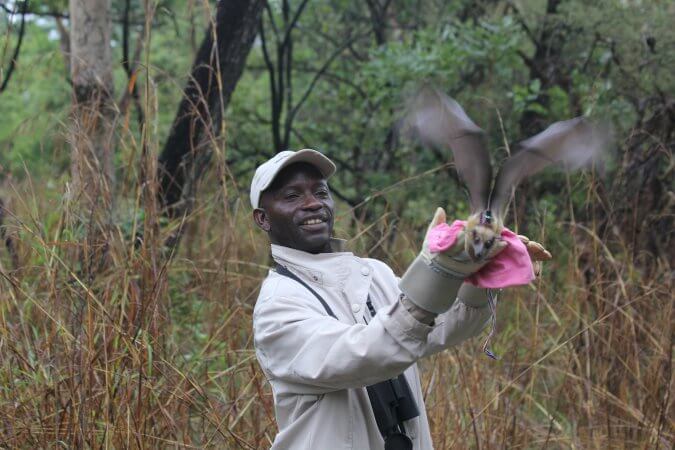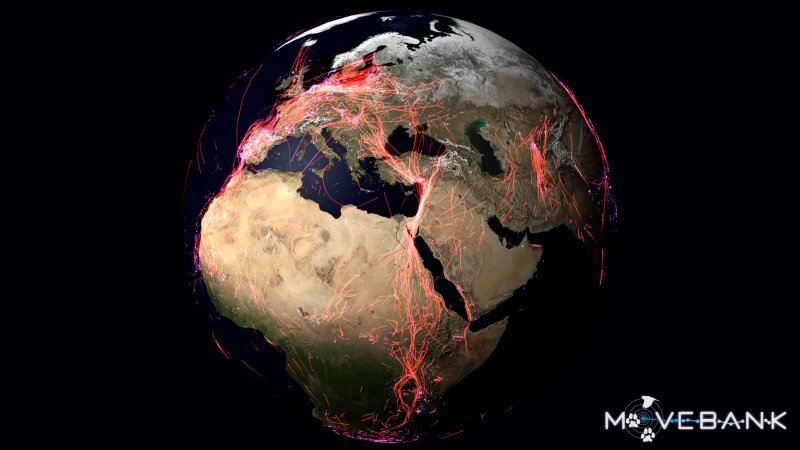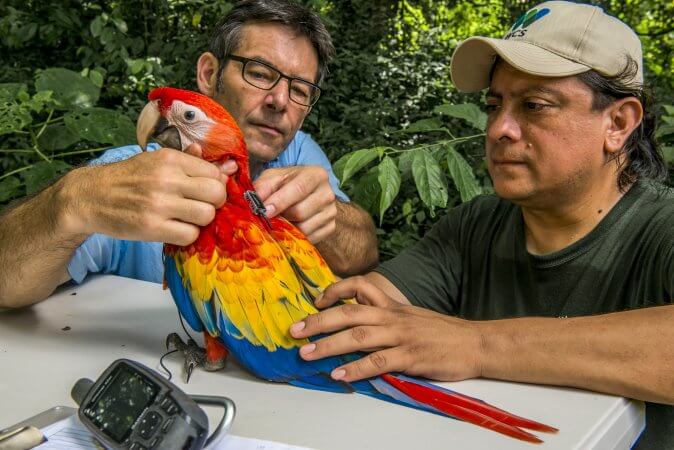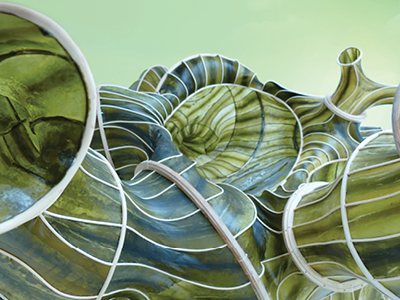Max Planck Institute of Animation Behavior, Department of Migration
Headed by Prof. Dr. Martin Wikelski
and team
ICARUS (Uschi Müller & team)
Schäuffelhut & Berger GmbH, Movebank
Babette Eid & team, MPIAB, MaxCine
couchbits GmbH, Michael Quetting, MPIAB, Movebank Museum and AnimalTracker
Dr. Kamran Safi, Dr. Andrea Kölzsch, Dr. Anne Scharf, MPIAB, MoveApps
Carla Avolio, MPIAB, Press and Outreach
Movebank
Two videos, 3D animations
3 min; 1:30 min
ICARUS Basic tag – Wearable for wildlife
Solar-powered, for tracking of acquiring position and velocity, 3D-acceleration, magnetic field vector and temperature.
Plastic
4,5 – 5 g
Courtesy Max-Planck-Institut für Verhaltensbiologie, Rohde & Schwarz INRADIOS GmbH, TALOS GmbH
Movebank is an open-source platform developed by the Max Planck Institute of Animal Behavior in collaboration with the North Carolina Museum of Natural Sciences, Ohio State University, and the University of Konstanz. The platform assists scientists and wildlife managers worldwide in collecting, managing, sharing, analyzing, and archiving billions of animal movement data and other data-based information relating to animals. Movement data contribute to creating knowledge and understanding of how animals live, how they respond to the growing impact of humans, and how they influence commonly inhabited ecosystems.
Where are animals moving, and why? How does animal behavior affect the ecosystem, and vice versa? How do animals respond to human interventions in the landscape and to changing climate conditions? What measures can be taken to protect and preserve endangered species? These are just some of the questions that scientists worldwide endeavor to get to the bottom of. Human existence depends on biodiversity. It forms the foundation for providing food, clean water, and numerous other ecosystem services that make life on the planet possible. In a time when global biodiversity is declining at an alarming rate, and actions to preserve it are becoming increasingly important, Movebank is a crucial project and tool for gaining knowledge and adjusting our actions accordingly.
Some of the data have been animated for the Frankfurter Kunstverein. They are presented as graphic lines moving on a 3D globe, revealing the routes of numerous animal species during their migrations. Animals travel far across the globe and bridge human-made borders. The lines show where and at what time different animal species are present, revealing a complex global network of habitats and ecosystems.
Biologist and ornithologist Prof. Dr. Martin Wikelski heads the Max Planck Institute for Behavioral Biology. He is also founder of the Icarus project (International Cooperation for Animal Research Using Space), from which the Movebank project emerged. Wikelski’s team follows the concept of an “Internet of Animals”. Thousands of tagged animals are tracked via satellite in their international movements and migrations, recording their positions, even in hard-to-reach areas such as oceans, deserts, or rainforests.
Movebank is a platform open to both scientists and citizen scientists. Anyone can participate and enter observation data into the database, becoming part of an international network. If tagged animals are missing or their location is indicated as stationary, a call can be issued to all community members to help search for animals in the field. The amount of data collected worldwide allows scientists to gain knowledge about animal migration and behavior, understanding complex relationships between human behavior and animals in order to advocate for conservation measures.
Movebank helps identify the impact of human interventions in the landscape and ecosystems and tracks changes in biodiversity. In Germany alone, an estimated one hundred million birds die prematurely due to reflective facades of high-rise buildings or air pollution. On the other hand, knowledge enables endangered species to be protected and recognizes that secure habitats offer them a home once again. Behind each animated light line of Movebank animation are countless individual stories stored in the database. Migratory populations of zebras in western Botswana, for example, have resumed long-distance journeys after years of short, chaotic routes because fences erected for economic purposes were removed. The zebras followed the original routes of their ancestors, even though they had no personal experience of them.
What the Movebank animation can convey is the extent to which human-made spaces, such as national borders, which animals cross, are relative. It also highlights the danger posed by thoughtless ecosystem destruction. The Movebank animation can create a sense of larger connections, much like astronauts experience when they see the Earth from space. They describe feeling a sense of wholeness when they see the planet without political boundaries, but in all its beauty from a distance, making them realize the profound fragility of life on Earth.
If you, dear visitors, are interested in participating in the Movebank project, please contact local environmental or conservation organizations or visit platforms like “Bürger schaffen Wissen” (www.buergerschaffenwissen.de). In Frankfurt am Main, for example, you can reach out to the following organizations: Senckenberg Gesellschaft für Naturforschung, Goethe-Universität Frankfurt, NABU, BUND, or SLInBio – Städtische Lebensstile und die Inwertsetzung von Biodiversität.
Or download the Movebank application on your mobile phone and actively participate in wildlife observation. The mobile Animal Tracker App can display the movements of tracked animals live on your phone. Ctmm: Continuous-Time Movement Modeling offers features for identifying, adjusting and applying random and continuous-time movement models for animal tracking data. Due to its user-friendly interface and accessibility via mobile devices, Movebank is also open to citizen scientists, allowing individuals to participate actively in scientific observations and data entry. Everyone can contribute to observations of animal populations, behaviors, and distribution areas of wildlife and keep records of sightings (online tools: Animal Tracker, Cat Tracker, or Snapshot Europe).





